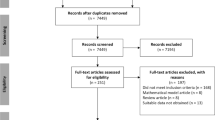Summary
When mushroom-bodies of time-trained honeybees are translocated according to the geographical longitude — the latitude remains nearly the same — and are implanted to naive host animals the information on time is transferred as an information on local time, i.e. the time-signal learned by the donor animal breaks through in the host animal isochronous with local time and not as an endogenously driven circadian rhythm.
Similar content being viewed by others
References
Aschoff J (ed) (1981) Handbook of behavioral neurobiology, vol 4, Biological rhythms. Plenum Press, New York London
Brady J (1974) The physiology of insect circadian rhythms. Adv Insect Physiol 10:1–115
Brown FA jr (1965) A unified theory for biological rhythms. Rhythmic duplicity and the genesis of ‘circa’ periodisms. In: Aschoff J (ed) Circadian clocks. North-Holland, Amsterdam, pp 231–261
Brown FA Jr, Hastings JW, Palmer JD (1970) The biological clock. Two views. Academic Press, New York London
Bünning E (1973) The physiological clock. Circadian rhythms and biological chronometry. Springer, Berlin Heidelberg New York
Einstein A (1911) Über den Einfluß der Schwerkraft auf die Ausbreitung des Lichtes. Ann Phys 35:898–908
Einstein A (1916) Grundlagen der allgemeinen Relativitäts-theorie. Ann Phys 49:769–822
Enright JT (1980) The timing of sleep and wakefulness. Springer, Berlin Heidelberg New York
Frisch K von (1965) Tanzsprache und Orientierung der Bienen. Springer, Berlin Heidelberg New York
Lorentz HA, Einstein A, Minkowski H (1982) Das Relativitätsprinzip. Eine Sammlung von Abhandlungen. Mit einem Beitrag von H. Weyl und Anmerkungen von A. Sommerfeld. Vorwort von O. Blumenthal, 8. Aufl. Teubner, Stuttgart
Martin U, Martin H, Lindauer M (1978) Transplantation of a time-signal in honeybees. J Comp Physiol 124:193–201
Martin H, Lindauer M, Martin U (1983) ‘Zeitsinn’ und Aktivitätsrhythmus der Honigbiene — endogen oder exogen gesteuert? SB Bayer Akad Wiss Math Naturwiss Kl:1–41
Mielke EW (1985) Bemerkungen zur Geometrisierung fundamentaler Wechselwirkungen der Physik. Naturwissenschaften 72:118–124
Minkowski H (1908) Raum und Zeit. Vortrag, gehalten auf der 80. Versammlung Deutscher Naturforscher und Ärzte zu Cöln am 21. Sept. 1908
Renner M (1957) Neue Versuche über den Zeitsinn der Honigbiene. Z Vergl Physiol 40:85–118
Renner M (1959) Über ein weiteres Versetzungsexperiment zur Analyse des Zeitsinnes und der Sonnenorientierung der Honigbiene. Z Vergl Physiol 42:449–483
Rensing L (1973) Biologische Rhythmen und Regulation. Fischer, Stuttgart
Rensing L, Schulz R (1984) Wie funktioniert die innere Uhr? Biologie in Unserer Zeit 14:13–19
Riemann B (1854) Über die Hypothesen, welche der Geometrie zu Grunde liegen. Probevorlesung vor der Philosophischen Fakultät zu Göttingen am 10. Juni 1854. Herausgegeben von H. Weyl 1919, Springer, Berlin
Riemann B bei Weyl H (1970) Raum, Zeit, Materie. Paragraph 11: Riemannsche Geometrie, 77–88
Saunders DS (1976) Insect clocks. Pergamon-Press, Oxford New York Toronto
Weyl H (1970) Raum, Zeit, Materie: Vorlesung über Allgemeine Relativitätstheorie. 6. Aufl. Springer, Berlin Heidelberg New York
Author information
Authors and Affiliations
Additional information
In memoriam of Prof. Dr. K. v. Frisch on the occasion of the 100th birthday
Rights and permissions
About this article
Cite this article
Martin, H., Martin, U. Transfer of a time-signal isochronous with local time in translocation experiments to the geographical longitude. J. Comp. Physiol. 160, 3–9 (1987). https://doi.org/10.1007/BF00613436
Accepted:
Issue Date:
DOI: https://doi.org/10.1007/BF00613436




